1. BACKGROUND
Watchlist is the fundamental information unit for financial professionals to monitor the stock market trend, predicted the invest benefits, and compared the return of interests across industries under the economic environment. Each financial service platform provides similar functionalities of the watchlist. How to efficiently manage this list is a critical challenge for all software vendors.
On our platform, we have the watchlist as a product over two years, with time being, we were gathering feedback from our clients. The inefficiency manage workflows block clients from using the downstream applications, for example, the email newsletter setting application. To encourage using watchlists and fill in the gap between the watchlist and downstream applications, the execution team decided to redesign the watchlist and reconsider its position on our product line.
2.Problems
During the first meeting with the product manager(PM), she delivered extensive messages to me based on the feedback she got from the past two years. The notes were including observation from user training sessions, bug reports from the support team, new expectations features from users' email, and even product opinions from the CEO. The PM asked me the plan, what should we do for the coming sprints?
3. PLAN & EXECUTION
Plenty of inputs came to me at once. The main task for me was to scope the project first. Studies all these inputs and our platform, two problems I need to solve in this project. One was the unfriendly workflows to create and manager the watchlist. Another one was that the watchlist disconnected from downstream applications.
We didn't have the chance to talk to our clients because of the schedule of this project. So the first step, I planned to learn the user behavior form our database.
In the second step, I invited the product, marketing, and development team members to have a workshop focusing on picture users' portraits and prioritized all features related to the watchlist.
Since I have the prioritized features, the PM and I was making a product plan from the short-term to the long-term.

3.1 Mining users' data
I data-mined our database and tried to understand the user's behavior patterns from three perspectives. One, How many watchlists did active users had? When and how it happened? Second, How many companies did they put into one watchlist? What were the attributes these companies shared? The last one is how did our clients name their watchlist, was any hints from these names telling me how did they use there watchlist?
Some of the studies facts:
1. Over seventy of our active users had at least one watchlist.
2. Fifty precent of people created the first watchlist during the onboarding session; Twenty of them use the system for another two weeks to set up their first watchlist.Most of the last thirty percent creat their first watchlist by the end of the second month of they create their accounts.
3. Around 50 % of people liked using an ordinal number, creation date, or combine both to name their watchlist. Another 50% of people called their watchlist by using a specific function name, as the S&P 500.
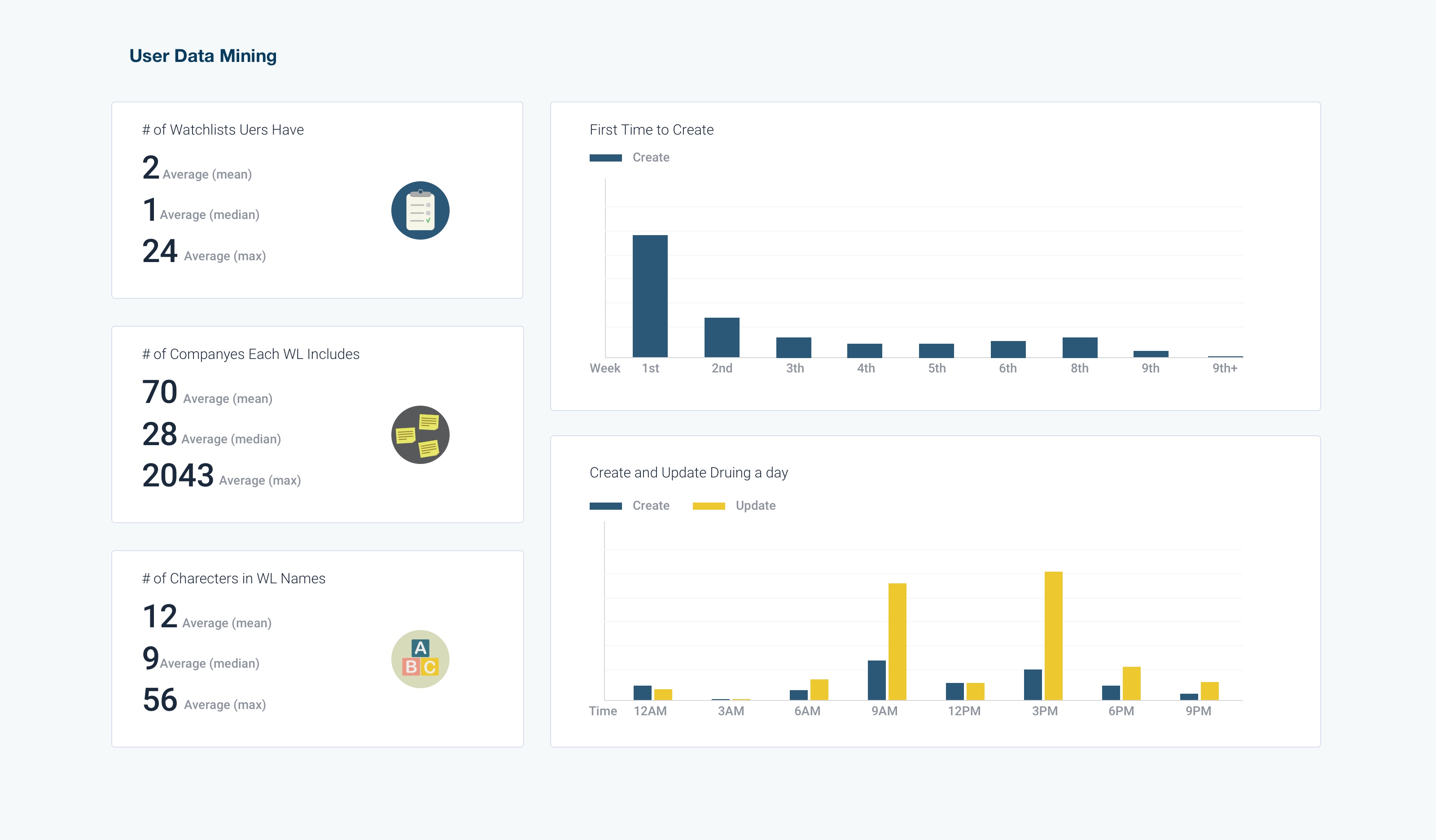
3.2 Define our product
I was inspired by a 2C website development framework that was talking about how to put features on the commercial website. For prioritizing features, defining the product is the first step. Applying the empathy of users to experience our platform was the direction of this part. During the workshop, I led participants using adjective words to answer all these questions.
How would we describe our users?
How do we sound to the clients?
How do they feel when using with this product?
What do they feel after using this product?
What makes our product special?
We listed the words and picked three answers for questions and then decided one to be the final version. And then I put all these words to make up a sentence to present our product.
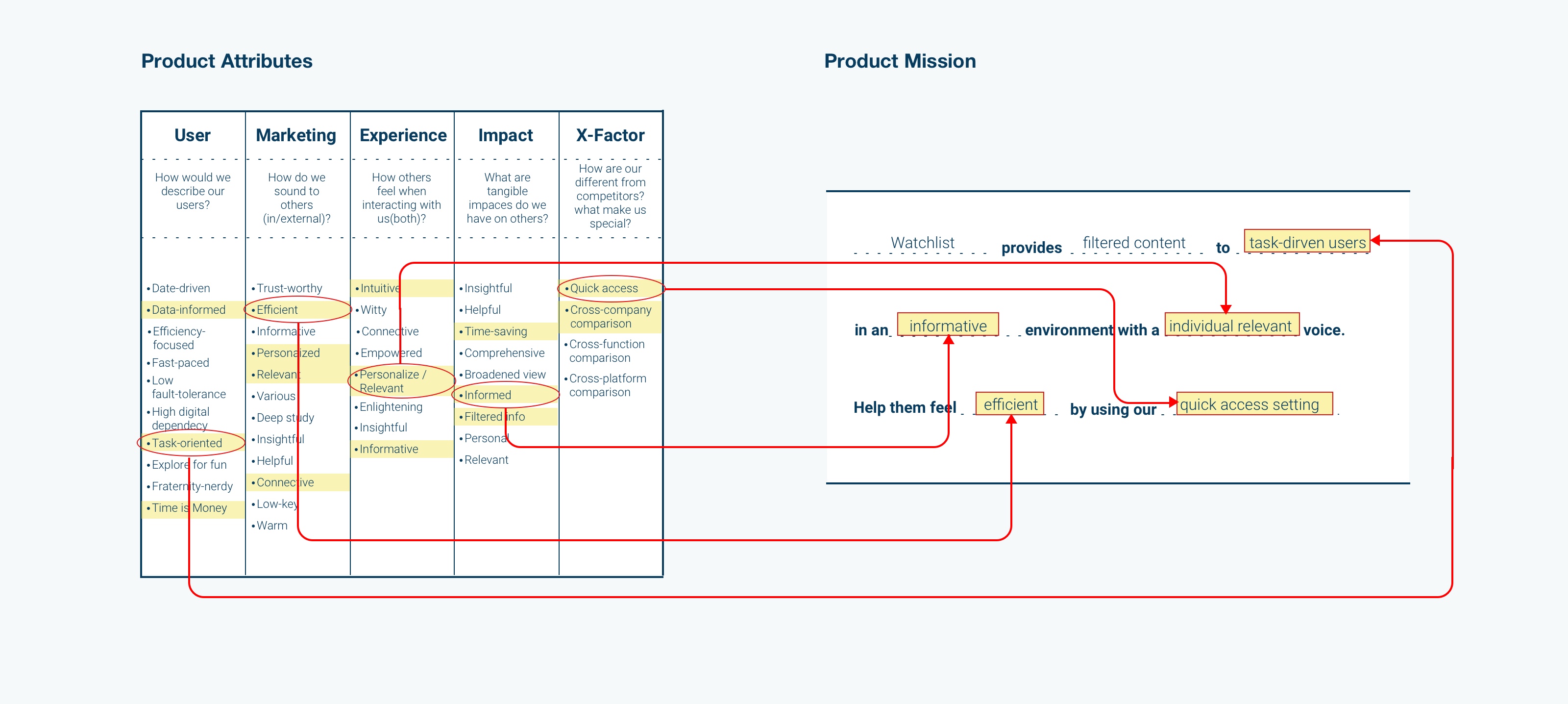
3.3 Draw users' portraits
And then, we analyzed our user's archetypes. Based on these types, we listed how they process the industry's data and content very day. How did our product help them? And more important, which tasks did we not support for them?
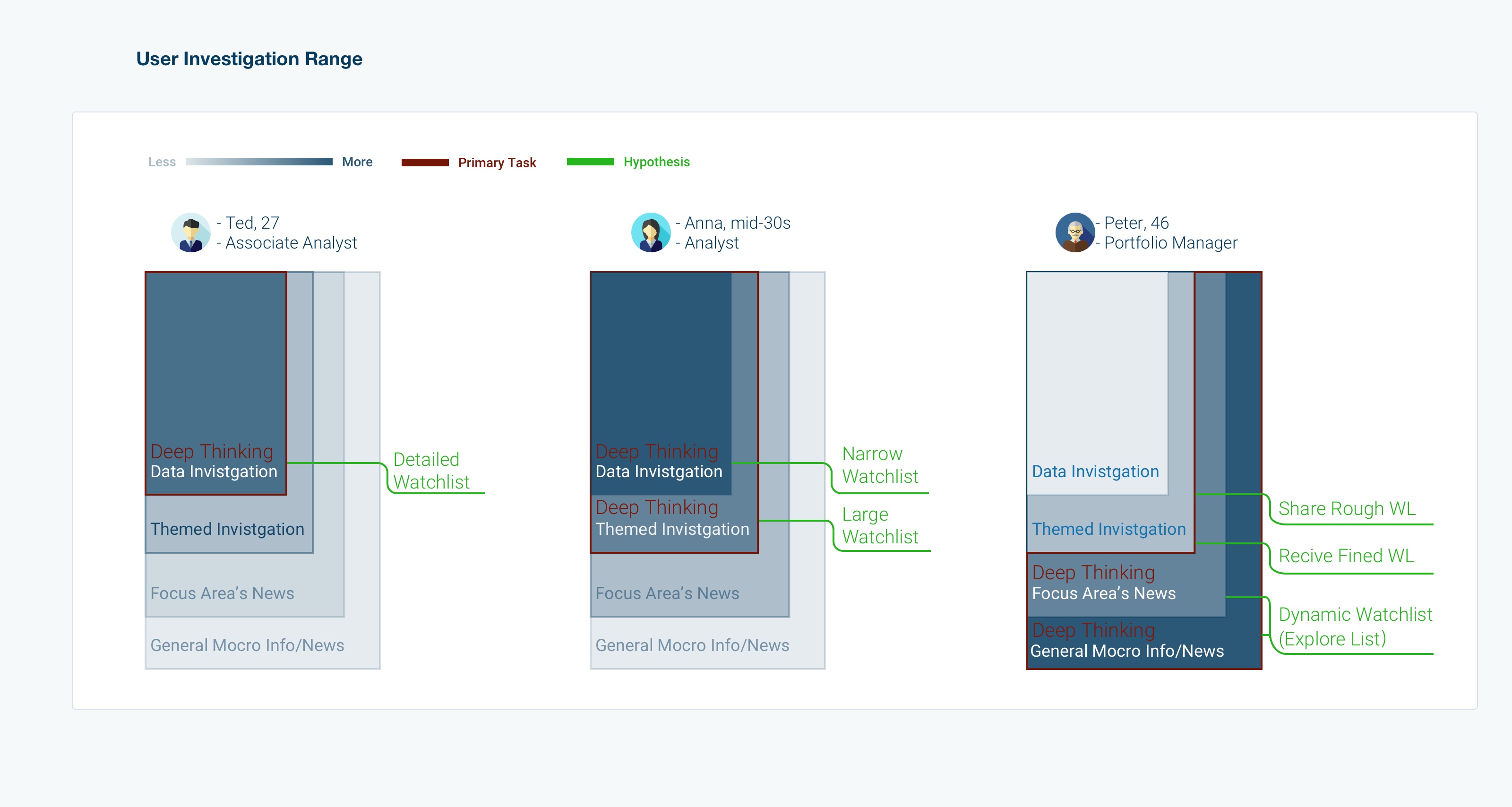
3.4 prioritizing features
Based on the answers from the previous step. We brainstormed the solutions and features. After listing all of them, we measured by four factors, marketing term, users' desirable, feature effect, and development difficult. We divided the marketing term into short, middle, and long. Feature effect was, basic, improving performance, and delighted. Desirable of users and development difficulty were rated form 1 to 10.
During this step, we need to separate vague-described features into specific sub-features. For example, Create a watshlist was a vague feature. Currently, companies are grouped in one watchlist. To create such watshlist was a basic feature in short-term. However, we proposed a kind of watchlist based on filters, for example, the hotel industry's companies. We called it the explore list. To create one filter for the explore list is a basic feature in the mid-term. Furthermore, create a filter combinations was a delighted feature in the long-term, such as the top 20 beneficial hotel companies plus Airbnb. Because we need to test our innovation features after the first term.
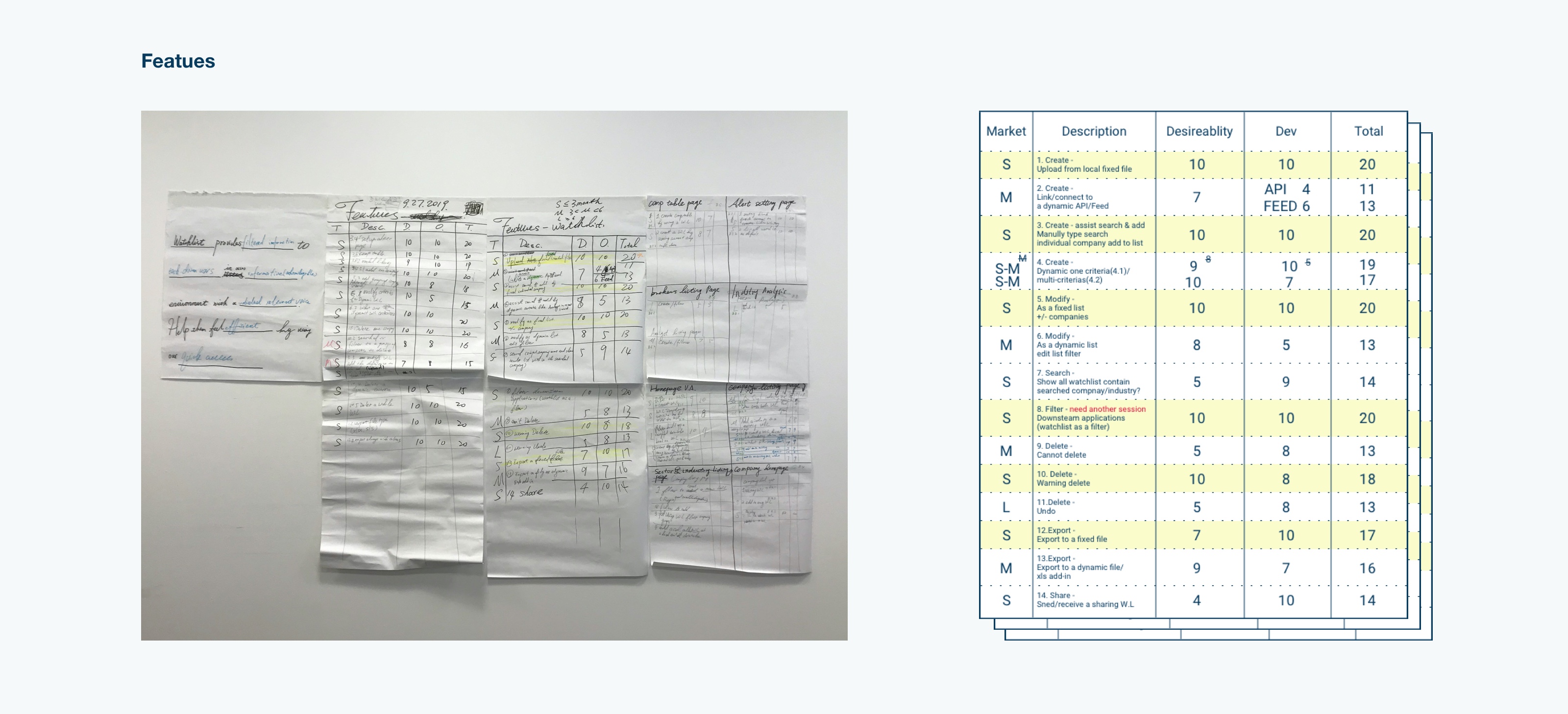
We put all these features into three terms and then balancing the number of user's desirable rating and difficulty rating. We wanted the numbers decreased linearly. Because by the end of each phase, I would facilitate user testing, some room need for iterations and modifications. In the last step, we balanced the number of basic, improving performance, and delighted features. The total number decreased linearly as well.
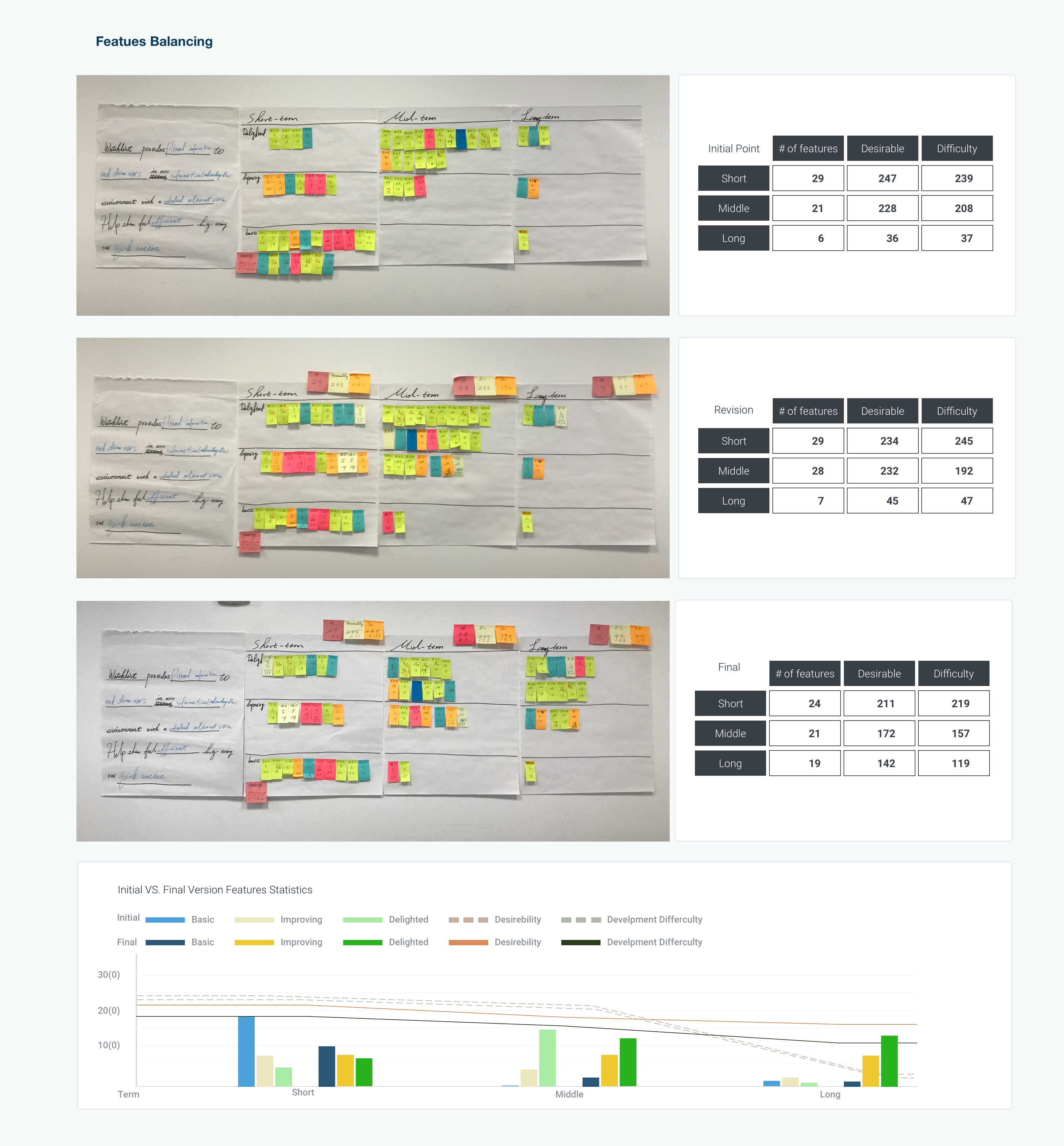
3.5 Roadmaps
In the end, we got a roadmap having three terms. The short-term started with fundamental features right away for the next sprint. Mid-term would begin in three to six monther; we need to hold user testing to iterate the short-term design. For the long-term plan, we would focus on more innovative design features.
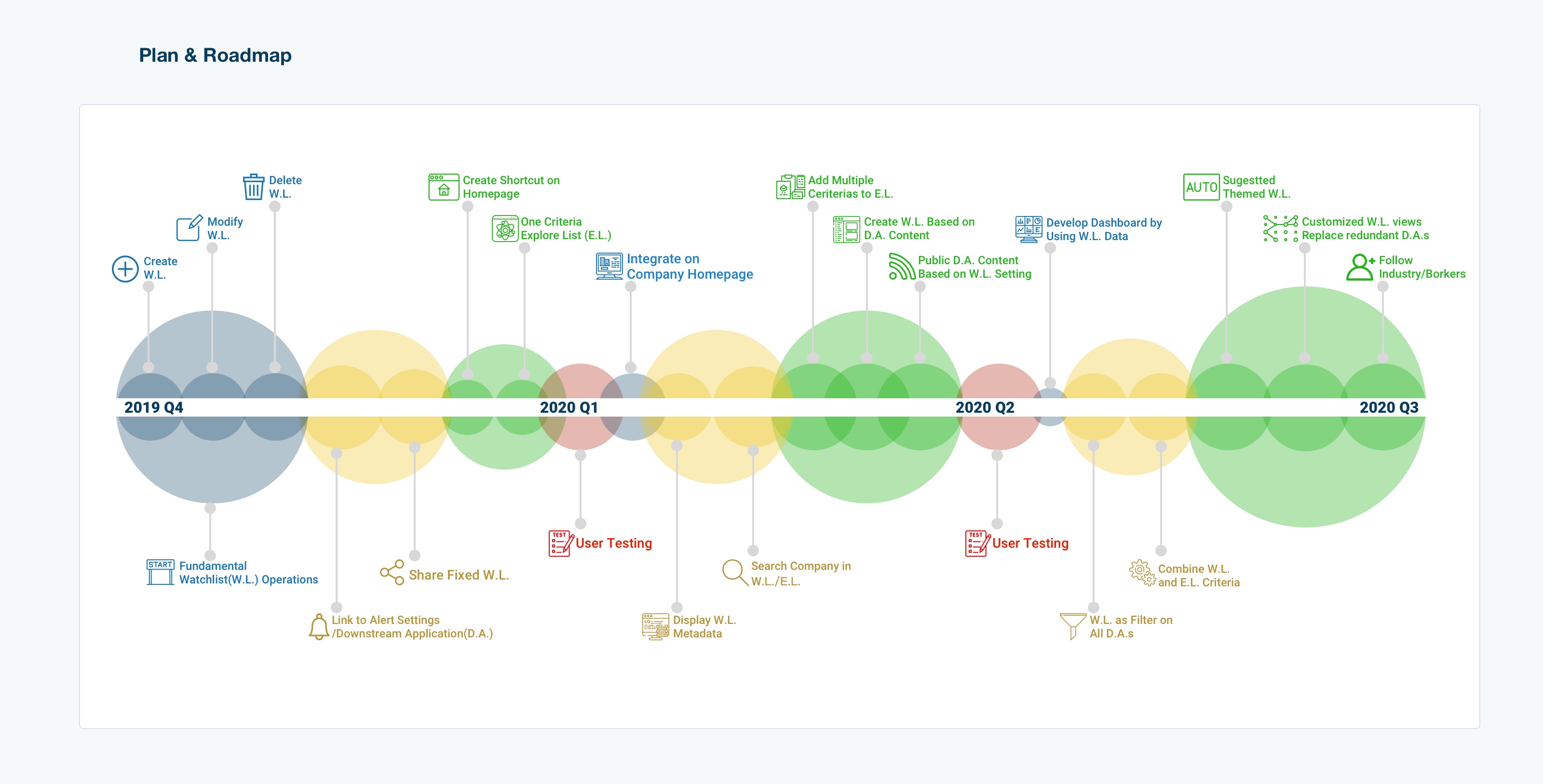
4 Takeaway
Hosting a task-orientated workshop with cross-team members aligns each team to the goal of the product based on users' needs. It is to set up a commutive method for teams to collaborate.
A right framework is a suitable tool for designers to clarify observation results and pain points, to summary insights, and to design the solution efficiently.